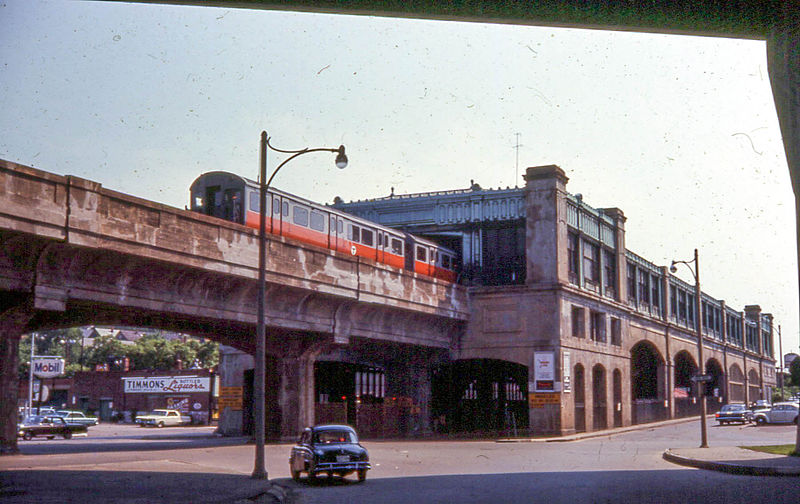By Morgan Lloyd, campus editor
Northeastern University Archives led a discussion on transportation equity in Boston Feb. 13 and screened a documentary about the formation of the Silver Line, the Massachusetts Bay Transportation Authority’s transit line that connects both Roxbury and the South End to downtown, the Seaport District and East Boston.
The documentary, titled “Equal or Better: The Story of the Silver Line,” was screened as part of the University Archives’ “Neighborhood Matters” series. It explored the period after the state tore down the Washington Street elevated train in 1987, which had connected Roxbury to the same areas now reached by the Silver Line bus rapid transit. The Silver Line was established in 2002 when community organizers in the Roxbury and South End neighborhoods fought for “equal or better” transportation to replace the services they lost.
Kris Carter, the director of the film and co-chair of the Mayor’s Office of New Urban Mechanics, said the Silver Line process showed the need for community involvement in transportation planning.
“I feel like the T learned a lot going through the Silver Line process,” Carter said. “What I’ve watched with Everett or with the Roslindale pilot is this prototype and experimentation to build consensus about what the community wants.”
As the movie described, the removal of the Washington Street elevated train left the Roxbury and South End neighborhoods with few transportation options. Many felt local government had promised equal or better service to replace the train line. Instead, it took the state 15 years to implement the Silver Line, a bus rapid transit service that many feel is still insufficient.
“It’s probably the best bus service in the state of Massachusetts, but it’s still just a bus,” Marvin Martin, the president of the Washington Street Corridor Coalition, said in the documentary.
Other projects for affluent and predominantly white communities, such as the tunnel under Hingham constructed for the Greenbush Commuter Rail line, received funding. Meanwhile, the documentary points out that proposed transportation projects such as a light rail line or electric bus system for Washington Street and Roxbury, where there is a large black population, never saw approval.
“If someone doesn’t believe transportation racism doesn’t exist, if ever there was something, that’s it,” Russ Lopez, a professor in the Boston University School of Public Health, said in the film.
Scott Hamwey, the leader of MassDOT’s transit planning team, talked about how the Silver Line’s history worsened communication between city planners and the communities they serve. This had an impact when he worked on improving the 28X bus line.
“We ran into a lot of the history that Kris [Carter] shared with this film. There were a lot of people where this was a very fresh issue,” Hamwey said. “Because of the history, it was really a challenging communications process for us to navigate.”
Giordana Mecagni, the head of special collections with the University Archives, said after the screening that events like these are important to help students understand the history of their current homes.
“Oftentimes it’s easy when you arrive in a place to think it’s always been that way,” Mecagni said. “I think the history of public infrastructure in Boston is a really fascinating thing to dig below the surface and think about.”
Mecagni emphasized the importance of educating Northeastern students, faculty and staff about the history and the changes in the area.
“It helps us understand where we are to understand where we came from,” Mecagni said.













